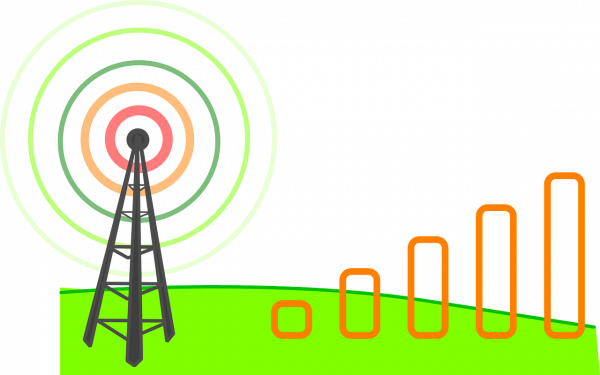Weather forecasting has never been an exact science. Everybody that relies on the process has had their share of inconveniences brought by false and off predictions. Carrying an umbrella on a hot and dry day or getting soaked by rain because you didn’t bring one. Everyone has been there. Now, telecommunications experts on Friday revealed an ace up their collective sleeve to usher in a more accurate rainfall forecast: a cell tower.
Cell Tower as Game-changer
Mobile phone towers were only thought of as simple steel structures that transmit and receive signals to enable all our calls and text messages. So, the fact that they can also aid in predicting rainfall is a welcome development. This repurposing of cell towers and its signals will very much help farmers in developing nations scattered throughout Asia and Africa. Emerging economies such as India and Sri Lanka cannot afford to purchase advanced equipment like rain gauge networks and ground-based radars. Hence, it becomes harder to forecast seasonal rains to which most farmers desperately depend on for their crops to grow.
Daniele Tricarico is an agricultural technology expert working at GSMA, a mobile communications industry body. “Weather information – that’s the number one need farmers have more than anything else,” he said during an agricultural conference held in Hyderabad in South India.
“We are trying to use very useful mobile operator data to provide better, enhanced services to small-holder farmers for climate resilience,” he also added.

Traditional Models in the Rear-view
Current weather forecast models can be described still as traditional methods. They use information retrieved from radars, satellites, and weather stations. These channels are always constructed specifically to collect environmental data. As already mentioned, systems like these are very expensive for underdeveloped countries. In the case of present and functional ones, they are few and far between.
Additionally, these traditional systems have the problem of blind spots. Radar doesn’t function at ground level. Satellite images are rendered useless when obscured by clouds. Weather stations only have limited coverage and building one can cost millions. Using cell tower signals eases all these negative factors.
Cell Tower Signals to Send Ripples
How exactly can mobile phone towers enhance weather forecasting? The answer lies simply in how they work.
It’s a given that cell towers exist to transmit radio signals. In remote areas, numerous mobile phone towers use microwaves to communicate with each other on the network. Here comes the eureka moment: rain disturbs and weakens electromagnetic signals. This means that a sudden dip in microwave strength reveals the presence of precipitation. It isn’t as accurate as rain gauges situated at rooftops, but cell towers become more effective because of their sheer number.
The huge quantity of mobile phone towers points to automatic data reporting and will cost meteorologists almost nothing. According to Tricarico, the information gathered can make rain forecasts up to 90% accurate. It can also provide more location-specific data in higher resolution than present satellites offer.

Impact on the Agricultural Sector
Damitha Gunawardena is a digital inclusion manager at Dialog Axiata, Sri Lanka’s biggest mobile phone operator. “If you talk to any farmer, they’ll say the climate has been changing so much that they have no idea what to expect anymore,” he stated.
This is why an upgraded weather forecasting becomes a necessity for farmers dealing with its effects. Climate change essentially makes weather patterns more difficult to predict. With the cell tower’s new purpose, farmers can receive predictions through text messages and calls. In turn, this system will help them schedule when to plant their seeds and apply fertilizers. It will also encourage small-scale farmers to consider and take insurances for their crops. Cell towers can allow insurance agents to zero in on locations where rain has fallen more precisely.
Challenges and Solutions
Several European countries and the United States as well have already begun using cell towers and mobile networks to predict rain. Unfortunately, it may still take a couple more years for developing countries to do the same, Tricarico said. Challenges that await are business model creation, regulatory application and permission, and software and algorithm customization for specific climates.
However, Boston-based company ClimaCell entered a partnership with Mumbai-based foundation Tata Trusts in January. Their objective is to establish such a service in India. ClimaCell deals with software with its Hypercast platform. Their system can analyze how weather alters wireless signals transmitted between mobile devices and cell phone towers.
